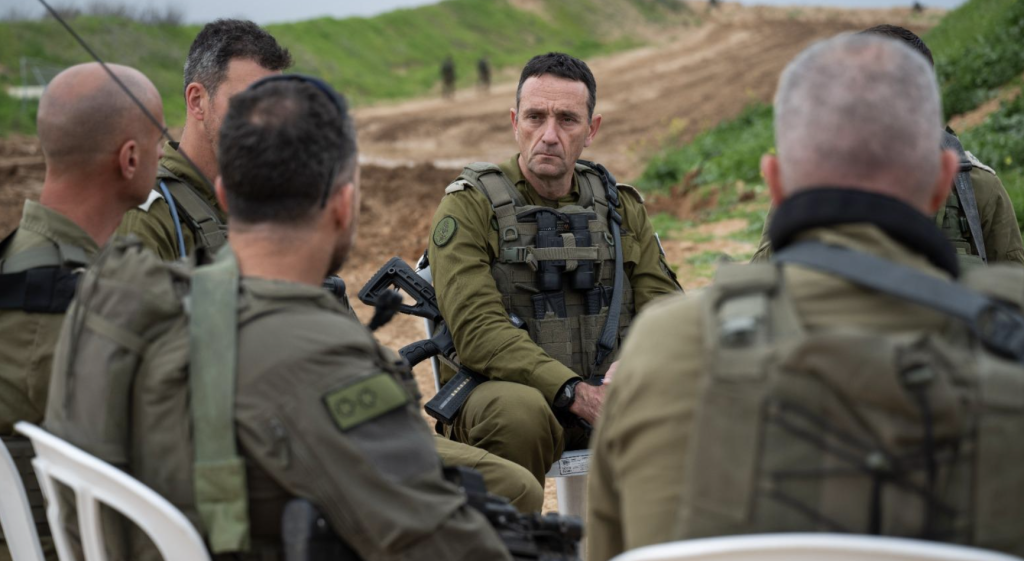
The border of Gaza four months into the war is the quietist it has been since Hamas launched its attack on October 7. Many fields along the border where Israeli farmers often plowed right up to the fence are now green in the wake of heavy winter rains. While most civilians of these communities remain evacuated, farming continues with volunteers and some workers who have returned.
Across the border in Gaza, the rocket fire from Hamas has been reduced to near zero daily attacks, a drastic reduction from the early October high-point of thousands fired. Israeli forces in Gaza were also reduced in January, with many units redeploying or leaving the strip. While there is focus on Rafah, particularly in the wake of a raid that freed two hostages on February 12, it is unclear if Israel will launch an operation in the southern Gaza city prior to Ramadan beginning in March. While the Islamic holy month is not necessarily a cut-off for fighting, it is a holiday that potentially has an affect on Gaza operations. At the same time, an Israeli delegation left for Cairo on February 13 for talks with Egypt, the US and Qatar about a potential ceasefire and hostage deal.
In Gaza, there continues to be concern about Hamas returning to areas in northern Gaza where the group was defeated in November. Israeli Chief of the General Staff Lt. Gen. Herzi Halevi addressed these and other concerns in a February 13 statement — one of his longest since the war began. “I just completed a visit to the Gaza Strip border with the forces in the field. We have been fighting for about four months and still have a long road ahead,” he said.
He described a changing war that began with a high cost due to the Hamas massacre and has now resulted in a “high-quality and powerful offensive.” He said no army has had to contend with the challenges that Israel has faced in the built-up areas of Gaza, a densely populated area with threats above and below ground. To provide an example of this challenge, the IDF released footage found of Hamas leader Yahya Sinwar in a tunnel on October 10. An illustrative diagram of the tunnel shows an extensive system under Khan Younis, the hometown of Sinwar and a large base for four Hamas battalions.
HaLevi says the IDF is advancing in Gaza as planned and that the performance of the army has “exceeded our expectations.” This raises questions about the expectations, because while the IDF has defeated most Hamas battalions, the organization continues to exist in southern Gaza, hold 134 hostages, and dictate terms via Doha at the talks in Cairo. Israel is now returning to target Hamas in northern Gaza where its terrorists continue to pop up. This phenomenon takes place in part because the IDF never sought to control the cities of Gaza for a long period of time, preferring to enter, defeat Hamas battalions, destroy the terrorist infrastructure that could be found, and then leave. “Using the intelligence we gained in the field and during the investigations of the numerous terrorists we caught, we returned to other targets, eliminating the enemy and destroying more terrorist infrastructure, thus intensifying our achievement,” Halevi said, characterizing the tactics that appear to underpin this phase of the war.
There is also more to do in Gaza, the top general says. This includes finding additional members of Hamas senior leadership as well as freeing the remaining hostages. It also means rebuilding the communities on the Gaza border. One of those communities, Kibbutz Magen, was able to repulse a Hamas attack on October 7 due to the quick response of its local volunteer security team that was armed with rifles and a security vehicle. However, like most communities, its residents continue to live in hotels at the Dead Sea. A local resident in Sderot told FDD’s Long War Journal they estimate that half the city has still not returned. “Our mission is to enable residents – in the north and the south – to return home safely,” Halevi said on February 13. Israel’s Ministry of Defense also said on February 13 that it had acquired an additional 200 security vehicles for the local security teams of small communities, such as those near the border of Gaza.







